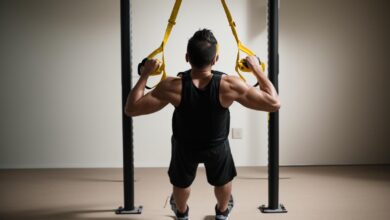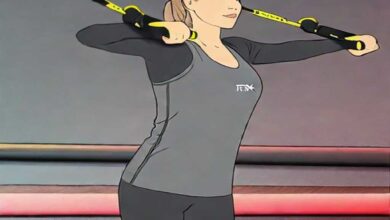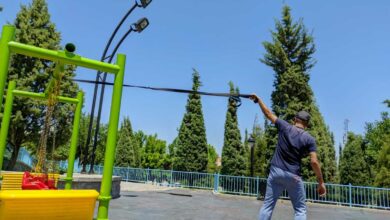New technologies bring new methods of exercise. Various gadgets and digital devices have found their way into old school training routines but first things first; it is the consistency in exercise that matters. In this article, we evaluate calisthenics vs. weight training from various perspectives.
Calisthenics and weight training can be combined to form a hybrid exercise routine or they can be followed separately. They both can be used for hypertrophy as well as cardiovascular purposes. Based on our purpose and facilities we can chose either training system.
Table of Contents
Calisthenics Workout Definition
Like eating and sleeping, exercise is one of our body needs; maybe not as essential as food and water but still, it is a determining factor in overall well-being. Modern lifestyle and automation, however, transform our living habits. Living in crowded cities reduces the chance of accessing open spaces suitable for exercise.
In response to the new requirement, gyms grow in many cities. Nowadays, it is not hard to find a local gym wherever we live. Calisthenics and weight training are two different approaches towards fitness with similar goals. Weight lifting definition implies using free weights, dumbbells, barbells, and other equipment to achieve the desired result.
On the other hand, calisthenics workout definition implies a set of physical exercises that utilize human body weight to achieve a fitness goal.
Calisthenics Body vs. Gym Body

Even though in both calisthenics and weight training, gravity or weight is used as a source of resistance, the figure of the body is sculpted differently according to the type of exercise. In fact, different variations such as fitness arise from this principle. Thus, from aesthetic point of view, we can compare calisthenics vs. gym body.
Calisthenics Body vs. Weightlifting Body from Different Angles
What matters during the exercise is the resistance the muscles have to compete against. From that point of view, there is not any difference between calisthenics and weight training. Muscles do not understand if the source of resistance is body weight, free weights, or even a bag of potatoes. In calisthenics or bodyweight training, a group of muscles is engaged while doing weights allows isolating muscles and focusing on each for optimum results.
In the comparison of calisthenics vs. weights body, we can evaluate it from two different standpoints. On one hand, from weight training point of view, each muscle will have a better chance of fatigue and development when there is a focused pressure on it that targets and activates all muscle fibres to their full potential.
On the other hand, the human body is an interrelated system and should be considered with its totality. Every part and organ of the body is related to another. No organ is isolated. This machine works and looks best when all organs are harmonized in relation to each other.
Calisthenics vs. Weights for Aesthetics
Calisthenics and weight training are ideal for reshaping the body and developing a firm and fresh figure. In considering calisthenics vs. weights for aesthetics, beauty is a matter of taste. Some prefer a professional bodybuilder shape whereas for others proportion of different parts of the body matters.
Calisthenics and bodyweight training consider groups of muscles more than isolated muscles. Thus, it shapes the human body and muscles in proportion. It is worth considering this well-known saying, “an eye is beautiful when it is in the body; An eye which is removed from its place and considered separately is not much of a pleasant view.”
In spite of that, not everything is about muscle building. In order to choose the best full body beauty routine, we should consider natural body type i.e. endomorph, mesomorph, ectomorph, height, weight, fat percentage etc. The best full body beauty routine for one person may not be ideal for another. For one person gaining muscle mass is important whereas for another person losing weight has priority.
A typical example of gymnastics body vs. bodybuilder’s shape can put this comparison into perspective.

Calisthenics vs Gym Body: Angular Range of Exercise
The human body is made in a way that by changing the angle of pressure you can add variety to the exercise. In calisthenics and weight training, this angular variation can be implemented in different ways. In calisthenics due to the nature of bodyweight exercise, there is a wider range of movement and there is more freedom to perform the training at any possible angle.
This freedom in angular variation allows the muscles to be trained in all directions and will end up in a more curvy and smooth shape than weight training. In comparison between calisthenics vs. weight body, we can study chest muscles and their angular range of exercise during TRX training.
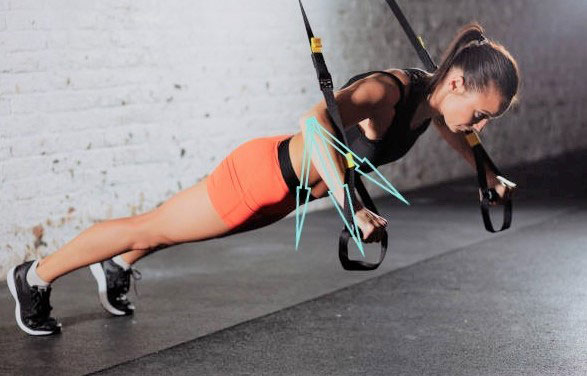
We can see that from elbow we have a wide angular range of exercise. Corresponding to the angle of body to the earth, we can adjust angle of pressure to chest muscles from the point of shoulders.
Using chest press machine and barbells and dumbbells in the gym, we can still have the freedom to diversify this angle of pressure, but it is far more limited compared to suspension training or other types of bodyweight exercises.

This freedom of angular range of exercise in calisthenics vs. weight allows us to train chest muscles at any direction in bodyweight training. As a result, we can develop curvier than angular chest muscles in weight training.
Calisthenics vs. Weights Body: Arm—Core Angle
Taking the example of chest muscles, in both calisthenics and weight training we can adjust the angle of arm to core and this way add variation to the exercise. In weight raining this is possible by using dumbbells.

Adjusting the Amount of Resistance in Calisthenics and Weight Training
In calisthenics and weight training, we can adjust the amount of resistance by altering the amount of weight but with different approaches in calisthenics vs. weights.
In weight training, we can add or reduce weights but in bodyweight exercise, our body weight is a fixed amount. in calisthenics, the resistance is ultimately provided by the position of the body in relation to gravity. In order to adjust the amount of resistance in calisthenics, we can change the angle of the body to the earth, or change the position of the organ in relation to the anchor point in TRX exercises.
In some exercises, the maximum weight on muscles is when the body is parallel to the ground whereas in some others being in a vertical stand-up position puts the maximum amount of weight on the muscles.
To compare calisthenics and weight training from this standpoint, in bodyweight exercises we can adjust micro resistance by changing the position of the body whereas in weight training we are limited to the weight of available discs or dumbbells. However, we can add as much weight as we need without limitation.
Adjusting the Amount of Resistance in Bodyweight Training with Distance from Pivot
This is the principle used in lever. By changing the distance between the point of load and pivot we can adjust the amount of resistance we need in some exercises. To be specific, in calisthenics and weight training by increasing the distance between load and pivot, we can increase resistance and vice versa.

This principle can be applied to calisthenics and weight training, but since with free weight we can increase or decrease weights this principle is not much of use. It is more applicable to bodyweight exercises. Study more about pivots in Simple Machines – Levers.
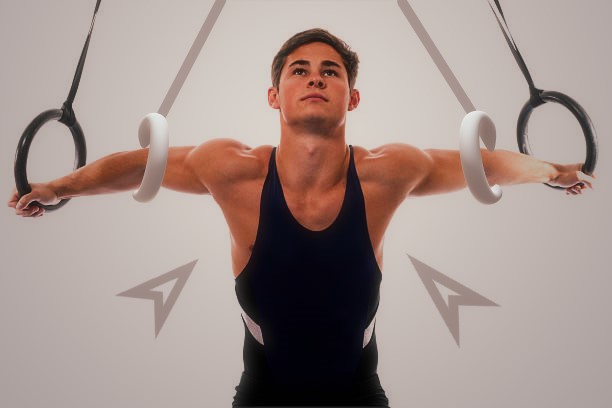
According to the above image, by bringing gymnastic rings closer to the body we can reduce the amount of force required to hold the body in this position or to do some repetitions.
Calisthenics vs. Weights Body: Stability in Weight Training vs. Instability in Bodyweight Exercises
Stability is another determining element in calisthenics and weight training. In weight training and especially in using weight machines we can have focused resistance on the targeted muscles during each repetition but in bodyweight training, due to its innate instability, this constant pressure is less determined than weights.
On the other hand, this element of instability in bodyweight training develops more balance and coordination than weight machines. Subsequently, there is more freedom to add variations to each exercise, and repeatedly challenge muscles by some minor changes in the position and angle of the body.
Hence, in the study of calisthenics vs. weights body, we can say that stability and instability of the exercise can affect the development of body shape.
Calisthenics vs. Weights Body: Lower Body Workouts without Weights
Human walks on two feet. Hence, his lower body is naturally bearing the weight of the entire body. In order to train lower body muscles, we should challenge those muscles with more resistance than their daily routine.
Bodyweight training is superb for upper body training, yet lower body workout without weights has obvious limitations. Perhaps the main discriminating factor between calisthenics and weight training is lower body workout.
To perform lower body workouts without weights, we can create this challenge by enduring body weight at certain positions that we do not normally take in daily life. For example, bending knees and slowly going to sitting position. Since we are normally either in standing or sitting position, this way we can challenge certain leg muscles in between these two states.
Another way of performing lower body workout without weights is doing single leg exercises instead of both legs. This strategy is more challenging than the previous one and allows us to increase the pressure on a single leg to an extent.
Nevertheless, after trying all these techniques for few sessions, they will become easy to perform and we will hit the brick wall of our body weight. This is even more evident when it comes to training calf muscles.
In this study, we are considering exercises from body shape, strength and conditioning, and especially muscle-building angle. In spite of that, we can apply plyometric exercises in lower body workout without weights.
Even though training the lower body in calisthenics and weight training is possible with different techniques, it is inevitable to make use of weights in bodyweight workouts.
Calisthenics vs. Weights Training: Gym Benefits and Disadvantages
Benefits of Gym Membership
For those who are new to exercise and have not received any formal training before, gym can bring many advantages in both calisthenics and weight training.
One of the major benefits of gym membership can be familiarization with the workout environment. That includes learning the basics of training from coaches as well as fellow gym members; becoming familiar with human physiology, functions of muscles and joints and their range of motion while reducing the risk of injury.
Motivation is one of the other benefits of gym membership that plays an important role in the consistency of exercise in both calisthenics and weight training; you can have workout partners and be motivated by seeing how others practice and make progress. Being a member of a community with a common purpose absorbing its ambience is also a psychological benefit of gym membership.
Moreover, for professional weight lifters working out in the gym seems to be the only available option. Considering the amount of weight that they lift in each repetition, for them benefits of gym membership also include using machines that brings stability in movement and target certain muscle groups precisely and steadily.
Disadvantages of Gym
For the public who are not seeking a professional athletic career, exercise can have different standards. Perhaps the best exercise plan is the one at your convenience. A training plan that is available any time and does not require you to travel long distances is the most suitable for both calisthenics and weight training. Here we can sacrifice equipment for efficiency.
Even though gyms, swimming pools or other sports facilities are locally available in many cities, with hustle and bustle of daily life that may not be a suitable option for a lot of people.
One of the disadvantages of gym in calisthenics and weight training can be when the gym timetable does not match our living program. Also, from the disadvantages of gym, we can also indicate their membership fee. Some pools and sports clubs might not be affordable for everyone, especially if someone decides to use them regularly as a routine exercise plan.
Someone might be living in suburbs or small towns with not many sports facilities at their disposal. These disadvantages of gym show that we shall not merely rely on the gym to achieve fitness or health benefits of calisthenics and weight training. In fact, with a proper technique and training plan, we can perform a full body workout at home without equipment.
Calisthenics vs. Weights: Suspension Training System
Heading to the gym or even outdoor activities like climbing are not the only ways to exercise muscles. Strength training requires resistance against muscular contraction and, however we can create such a resistance will do the job.
Related, Bodyweight Hypertrophy Sets with TRX.
Suspension training is a system exercise that uses body weight to great resistance. In other words, we can use our own body weight to create an opposing force instead of weights.
You can substitute a complete gym with your own body weight. Be it weight training or cardiovascular, both are effectively possible with a set of straps. TRX suspensions training system is a versatile piece of equipment that can be used in almost any environment. It requires no extra space; It has no extra costs, and it is readily available whenever we decide to exercise.
To conclude, the world we live in is moving towards new conditions that are unprecedented in human history. The effect of Covid-19 on people’s life is a global issue, and we have to adjust our living habits to new circumstances. Mankind becomes more isolated than before; social interactions are restricted.
Social distancing and new regulations closed sports facilities. All that means we have to adapt to new living conditions. Throughout history, mankind had always adapted to new circumstances. Living conditions have changed from tribal life to modernity. Suspension training system is an efficient way to fulfil that requirement.
Check our step by step guide to create your Homemade TRX- full body calisthenics workout trainer.

